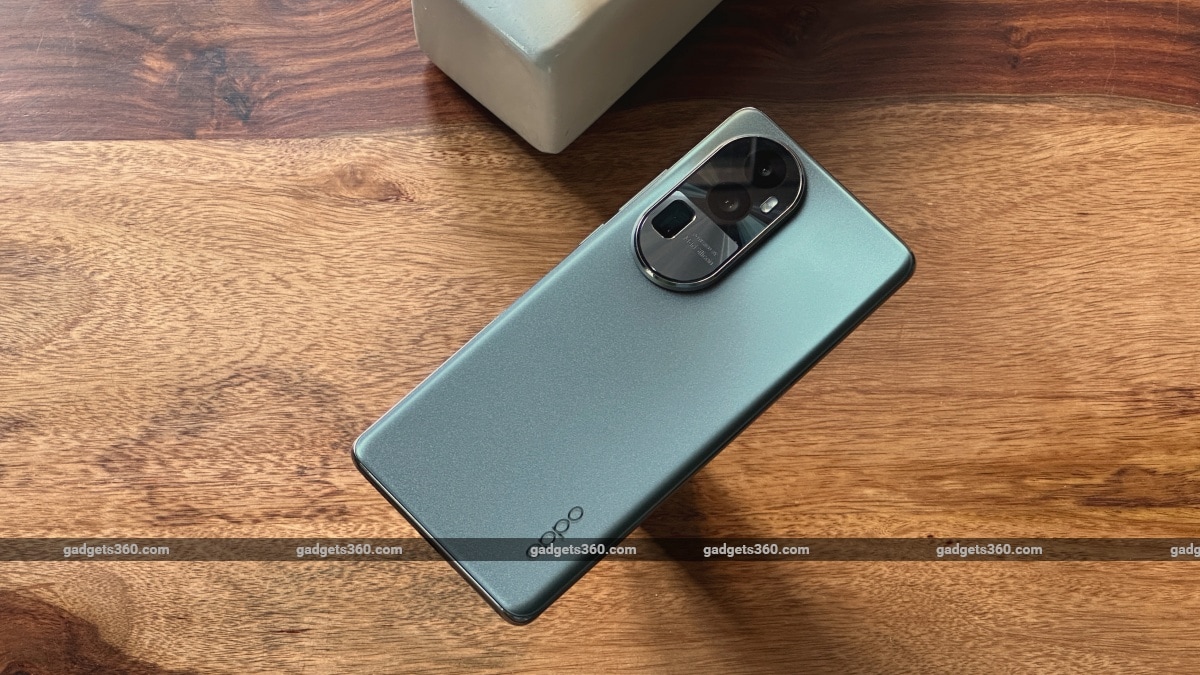
Oppo Reno 10 Pro+ 5G daylight camera samples (Top to bottom): Ultra-wide, primary, telephoto (tap to see full size)
In low light, the phone automatically captures longer exposures so there’s usually no need to switch to the dedicated Night mode. The camera performs quite well under street lighting with slightly limited dynamic range (particularly in the shadows) leading to slightly contrasty photos. However, there is less resolved detail when snapping photos of dimly-lit scenes, even after switching to Night mode, which is expected from a smartphone at this price point.
Performance of the ultra-wide camera in daylight is just fine, but photos were not as detailed as the primary camera and often came out a bit overexposed. There’s minor barrel distortion as well along with some purple fringing when shooting bright scenes. In low light, photos appear quite average with soft details and blotchy textures.
Oppo Reno 10 Pro+ 5G low-light camera samples. Top: Ultra-wide-angle camera (Auto), bottom: primary camera (Auto) (tap to see full size)
In the case of the Reno 10 Pro+ 5G, the telephoto camera is the actual showstopper. Oppo has equipped it with an unusually high-resolution sensor and this manages to capture really incredible photos that are difficult to find among smartphones at this price point. Oppo’s periscopic telephoto setup also manages to keep the minimum focussing distance at around 25cm.
There is also a hybrid implementation at work where the camera software sticks to the primary camera inside the 25cm margin, even if you switch to the 3X zoom setting. Once an object is more than 25cms away from the phone, the system automatically switches back to the 3X periscope telephoto camera.
Photos captured by the telephoto camera (right) have a cooler colour tone compared to those captured by the primary camera (left)
Because of this implementation, there is a noticeable difference between the quality of these 3X magnified photos from the primary camera and the telephoto camera. 3X photos from the primary camera don’t look as sharp as the ones captured by the telephoto camera as they are scaled-up crops from the primary camera. However, the photos from the 3X telephoto camera are quite impressive. When shooting subjects or objects, the depth, detail and separation offered by this camera is really impressive in daylight and even under artificial light. In dimly-lit or street-lit shooting conditions, photos come out looking soft and have a water-colour effect with limited detail.
The camera system is also capable of shooting beyond 3X zoom, but the results start to drop in quality after 6X itself.
The telephoto camera (right) shows noticeably cooler colour tones compared to the primary camera (left)
Selfies look sharp with accurate skin tones once you switch the beautifying features off. The phone is also good at shooting clear and sharp selfies in low light, which is another rarely found quality in smartphones in this segment. Edge detection, while accurate in daylight, falters a bit in low light.
Videos captured at 4K 30fps footage in daylight are well stabilised and show good details and dynamic range. 4K 60fps footage is also equally impressive with a steady framerate and good stabilisation. Shooting at 4K 30fps setting in low light results in footage with minimal noise with a steady framerate and slightly limited dynamic range. Stabilisation is also quite good with a bit of shimmer, but the frame is a bit cropped. Switching to 4K 60fps in low light produces a steady framerate but with very limited dynamic range and a contrasted look. The ultra-wide angle camera is limited to 1080p 60fps video recording.
Verdict
The Oppo Reno 10 Pro+ 5G definitely meets our expectations and is a noticeable leap over the Reno 8 Pro 5G, which felt more like a mid-range smartphone in terms of its camera and raw performance. Despite the slightly dated processor, the Reno 10 Pro+ 5G still manages to deliver good performance and also comes with capable camera hardware.
However, as mentioned earlier in this review, there’s the OnePlus 11 5G (Review) which offers a Qualcomm Snapdragon 8 Gen 2 SoC, along with a bigger 5,000mAh battery. It also has a superior ultra-wide angle camera with a higher resolution sensor. There’s also the iQoo 11 5G (Review) which packs hardware that’s similar to the OnePlus 11, and although it lacks the rather flexible camera of the 11 5G and the Reno 10 Pro+ 5G, it does gets 120W wired fast charging, which is pretty much unmatched in this segment (and beyond). If you’re specifically looking for good cameras in this segment, then it’s hard to ignore the Google Pixel 7 (Review).
Those looking solely at the raw power of the Qualcomm Snapdragon 8+ Gen 1 SoC, will also find it in more affordable alternatives. The recently launched iQoo Neo 7 Pro 5G has similar core specifications and a faster 120W charging system and is priced from Rs. 34,999. The newly launched Nothing Phone 2 uses the same processor too and adds an IP54 rating and wireless charging, along with an eye-catching design.
Oppo’s Reno 10 Pro+ 5G has managed to find its sweet spot with its quality telephoto and selfie cameras, both of which are hard to find at this price point and would probably be one of the main reasons why many would choose it over the OnePlus 11 5G.


